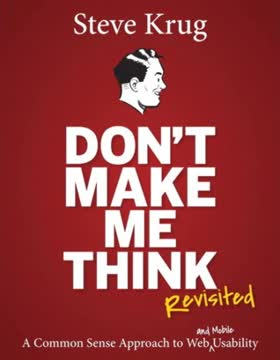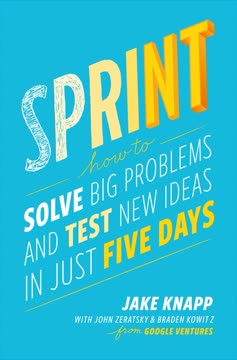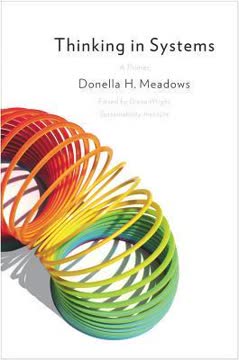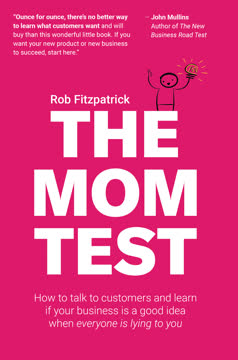重点摘要
1. 围绕明确的学习成果设计工作坊
学习成果是指参与者能够带走的具体知识、技能或洞见。
明确你的受众。 首先建立受众画像,了解参加者是谁、他们的经验水平以及期望获得什么。这些信息将指导你选择内容和确定授课方式。
聚焦成果。 避免模糊的主题,专注于具体且高价值的收获。例如,不是“销售入门”,而是“销售关键在于提出好问题”。这种清晰度有助于你和参与者明确工作坊的目标。
归类相关内容。 将学习成果与支持论点或关键观点归为一组。这种结构为工作坊提供框架,确保每个主题得到全面覆盖。
2. 采用多样化教学形式以保持参与度
为避免“用讲座教瑜伽”的尴尬,选择与教学内容相匹配的教学形式。
必备形式:
- 讲座:传授“书本知识”,总结练习要点
- 小组讨论:探讨模糊选项及个人影响
- 现场实践:“马上试一试”,培养动手能力
- 情景挑战:锻炼判断力、评估和决策能力
- 问答环节:解决疑惑,灵活调整进度
保持注意力。 每隔20分钟至少切换一次教学形式,让参与者保持新鲜感和专注度。多样化有助于抵抗形式疲劳,维持全程活力。
3. 先搭建工作坊骨架,再设计幻灯片
不要一开始就做幻灯片,要先搭建骨架。
构建框架。 将学习成果与时间段(含休息)结合,形成工作坊骨架。这个宏观视角确保节奏均衡、内容合理。
幻灯片精简。 先准备最必要的幻灯片:
- 学习成果总结
- 练习提示
- 资源清单
- 视觉示例(视主题需要)
后期丰富。 基础完成后,再添加个性化元素和辅助视觉。切记幻灯片是服务内容,而非内容的主导。
4. 促进小组形成与座位安排,优化互动效果
尽量采用能自然形成小组的座位布局。
理想布局。 采用卡巴莱式座位,每桌4-8人,方便组内交流和灵活调整。
应对固定座位。 若座位固定,尽量将参与者聚拢,并准备手动分组。设计练习时考虑灵活的小组规模(如2-3人或3-5人)。
积极引导。 帮助孤立者融入小组,及时干预主导型成员。长时间工作坊中定期更换小组组合,保持活力并拓宽视角。
5. 通过休息与多样活动管理能量水平
为避免“用讲座教瑜伽”,选择与教学内容相符的教学形式。
尊重休息时间。 把咖啡休息视为神圣,不要为了塞内容而牺牲。规律休息有助于维持精力和专注。
活动多样化。 利用不同教学形式激发参与度:
- 讲座传授知识
- 小组讨论促进反思
- 现场练习培养技能
- 情景挑战锻炼决策
恢复注意力。 休息或练习后,采用“环形发言”或“借用善意”等技巧,轻松收回注意力,避免强硬控制。
6. 以同理心和引导应对难缠参与者
专家往往觉得自己有资格教授内容,利用这一点将其置于高位,融入教学,成为其他学员的榜样。
识别问题。 常见挑战包括:
- 抵触情绪强烈的群体
- 提问无关紧要的个体
- 不参与或心不在焉的学员
- 觉得内容低级的专家
- 捣乱者
针对性应对。 例如:
- 对抵触者快速传递价值,缓解情绪
- 对无关提问者私下沟通
- 帮助害羞者融入友好小组
- 将专家置于榜样位置,纳入教学
最后手段。 对无法调和的捣乱者,可考虑退款并请其离开,保障其他学员的学习体验。
7. 自信灵活应对突发挑战
工作坊灾难的黄金法则:观众会反映你的慌乱。你若镇定,他们也会镇定。
保持冷静。 你的反应决定现场氛围,沉着应对能带动大家稳定情绪。
备好备用方案。 准备在无常用工具或意外环境下继续教学,比如火警时能转移到室外。
降低风险。 主动预防常见问题:
- 自备必要设备(转接头、备份幻灯片)
- 与场地明确沟通需求
- 提前到场检查,排除隐患
8. 保护自身能量,做个高效的引导者
全天授课极其消耗体力,疲劳不可忽视或强忍。
珍惜休息。 利用咖啡和午休时间寻找私密空间充电,必要时自备食物,避免被社交困住。
设定界限。 明确告知客户或学员你需要准备时间,尤其是长时间活动中。
认识重要性。 保护自身能量不是自私,而是保证高质量教学体验的前提。
9. 通过反思与迭代持续提升
每次工作坊结束后,进行简短回顾。
开展回顾。 用10-20分钟反思哪些做得好,哪些可改进,以及下次调整方向。
收集反馈。 虽然正式反馈表有用,但许多问题现场即可察觉。关注能量、参与度和困惑点。
实施改进。 选取少数高影响力的改进措施,逐步提升教学水平。
长期心态。 将教学视为多年打磨的技艺,而非一蹴而就的技能。把挑战当作成长和持续进步的机会。
最后更新日期:
FAQ
What's "The Workshop Survival Guide" about?
- Purpose of the book: "The Workshop Survival Guide" by Rob Fitzpatrick and Devin Hunt is a comprehensive manual on designing and facilitating educational workshops that consistently deliver value.
- Target audience: It is aimed at both novice and experienced facilitators who want to improve their workshop design and delivery skills.
- Content structure: The book is divided into two main parts: Workshop Design Essentials and Facilitation Essentials, each providing detailed strategies and techniques.
- Practical focus: It emphasizes practical, actionable advice that can be applied to a wide range of workshop topics and audiences.
Why should I read "The Workshop Survival Guide"?
- Proven methods: The authors share a reliable approach that has been tested in hundreds of workshops across various industries and audiences.
- Comprehensive guidance: It covers everything from initial design to handling unexpected challenges during facilitation, making it a one-stop resource for workshop facilitators.
- Adaptability: The strategies are adaptable to different workshop formats, durations, and audience types, ensuring broad applicability.
- Skill development: It helps facilitators develop the skills needed to create engaging, high-energy workshops that leave participants satisfied and eager to learn more.
What are the key takeaways of "The Workshop Survival Guide"?
- Workshop Skeleton: Start with a clear structure by defining your audience, schedule, and learning outcomes before creating slides or content.
- Teaching Formats: Use a variety of teaching formats to maintain energy and attention, such as lectures, discussions, and hands-on practice.
- Facilitation Techniques: Learn how to introduce yourself, manage group dynamics, and handle difficult participants effectively.
- Energy Management: Design workshops that maintain high energy levels through strategic breaks and varied activities.
How do the authors suggest maintaining audience energy and attention?
- Regular breaks: Insert breaks every 60-90 minutes to keep energy levels high and prevent fatigue.
- Vary teaching formats: Switch teaching formats at least every 20 minutes to keep the audience engaged and attentive.
- Deliver "a-ha" moments: Consistently provide valuable insights or takeaways to maintain goodwill and interest.
- Interactive exercises: Incorporate hands-on activities and discussions to refresh attention and reinforce learning.
What is the "Workshop Skeleton" and why is it important?
- Definition: The Workshop Skeleton is a foundational structure that includes the audience profile, schedule chunks, and learning outcomes.
- Purpose: It provides a clear framework for designing a workshop, ensuring that all elements align with the intended learning goals.
- Benefits: By focusing on the skeleton first, facilitators can avoid getting lost in details and ensure a coherent, effective workshop.
- Flexibility: It allows for easy adjustments and iterations, making it adaptable to different audiences and topics.
What are the five essential teaching formats mentioned in "The Workshop Survival Guide"?
- Lectures: Used for delivering book knowledge and extracting takeaways from exercises, but should be kept short to avoid fatigue.
- Small group and pair discussions: Encourage engagement with ambiguous questions and personal implications, fostering deeper understanding.
- "Try it now" practice: Provides hands-on experience to build skills, ensuring that theoretical knowledge is applied in practice.
- Scenario challenges: Develop critical thinking and decision-making by asking participants to evaluate and act in complex situations.
- Question & answer: Offers flexibility in the schedule and helps address major objections or confusion, though it should not be overused.
How do the authors recommend handling difficult participants or hostile audiences?
- Acknowledge concerns: Explicitly recognize the audience's concerns and quickly deliver value to win them over.
- Sideline irrelevant questions: Politely suggest discussing specific issues 1-on-1 during breaks to keep the session on track.
- Put experts on a pedestal: Involve knowledgeable participants by asking for their input, turning potential hostility into collaboration.
- One-on-one intervention: If necessary, speak privately with disruptive individuals to understand and address their concerns.
What strategies do the authors suggest for staying on schedule during a workshop?
- Use two clocks: Employ a section timer and an exercise timer to keep track of time without relying on a smartphone.
- Announce late starts: Inform attendees of any delays and set a new start time to manage expectations.
- Recover time: Use flexible sections like Q&A to regain lost time, or cut content if necessary to stay on track.
- Create a safety net: If running late, offer to provide missed content via email to accommodate those who need to leave.
What are some advanced teaching formats mentioned in the appendix?
- Trigger Questions: Use rapid-fire prompts to generate ideas and reveal alternative solutions, helping participants escape tunnel vision.
- Card Games: Introduce tools or resources through engaging games, facilitating learning in a playful manner.
- Judging Hat: Have participants act as judges to understand evaluation processes, useful for skills judged by external parties.
- Lab Time: Allow attendees to work on their own projects with expert help available, ideal for hands-on disciplines.
What are the best quotes from "The Workshop Survival Guide" and what do they mean?
- "Attention is the first step in the learning process." This quote emphasizes the importance of capturing and maintaining audience attention to facilitate effective learning.
- "The audience grants you temporary control of their attention." It highlights the responsibility of the facilitator to deliver value and maintain goodwill throughout the workshop.
- "You can’t teach yoga with a lecture." This metaphor underscores the need to match teaching formats with the nature of the content being taught.
- "The audience mirrors your panic." It reminds facilitators to remain calm and composed, as their demeanor directly influences the audience's response.
How do the authors suggest using co-teachers, expert guests, and helpers in workshops?
- Co-teachers: Share teaching responsibilities and provide feedback to improve facilitation skills, enhancing the overall workshop experience.
- Expert guests: Add credibility and diverse perspectives, complementing core teaching material without taking over the main content.
- Facilitation helpers: Assist with exercises and help manage larger audiences, ensuring smooth execution of complex activities.
- Operational helpers: Handle logistical issues and unexpected problems, allowing the facilitator to focus on teaching.
What is the role of "Learning Outcomes" in workshop design according to "The Workshop Survival Guide"?
- Definition: Learning Outcomes are the specific, high-value takeaways that participants are expected to gain from the workshop.
- Guidance: They help facilitators decide what content to include and what to cut, ensuring a focused and relevant workshop.
- Structure: Learning Outcomes form the backbone of the Workshop Skeleton, guiding the design and facilitation process.
- Evaluation: They provide a benchmark for assessing the success of the workshop, both for the facilitator and the participants.
评论
《工作坊生存指南》因其实用且可操作的建议而备受赞誉,帮助读者有效地设计与开展工作坊。读者们欣赏其清晰的结构、贴近实际的案例,以及对策划与主持两方面的关注。无论经验多寡,许多人都认为本书对提升教学技能大有裨益。该书以简明而全面的方式呈现内容,涵盖了从工作坊设计到应对棘手情况的各个环节。虽然部分读者希望能增加线上工作坊的相关内容,但总体而言,本书被高度推荐给希望提升工作坊能力的教育者和演讲者。
Similar Books















